Are you on a tight budget but want to improve the aesthetics of your cinder block wall? Choose from our multiple ideas and do a cinder block wall covering yourself!
Cinder block walls are easy to install, practical, and budget-friendly. Although affordable, the bland wall textures and looks are not pleasing enough. And if you decide to do cinder block wall covering, you increase its durability and add liveliness to your home.
Covering cinder block walls can transform your space from cold and industrial to warm and inviting. When I tackled my basement’s cinder block walls, I found that applying a faux stone veneer was a game-changer. Not only did it add texture and depth, but it also created a cozy atmosphere that made the space feel like part of the home. For those looking to embark on a similar transformation, I recommend checking out a variety of faux stone veneer options on Amazon. These products are durable, easy to install, and come in a range of styles to fit any decor.
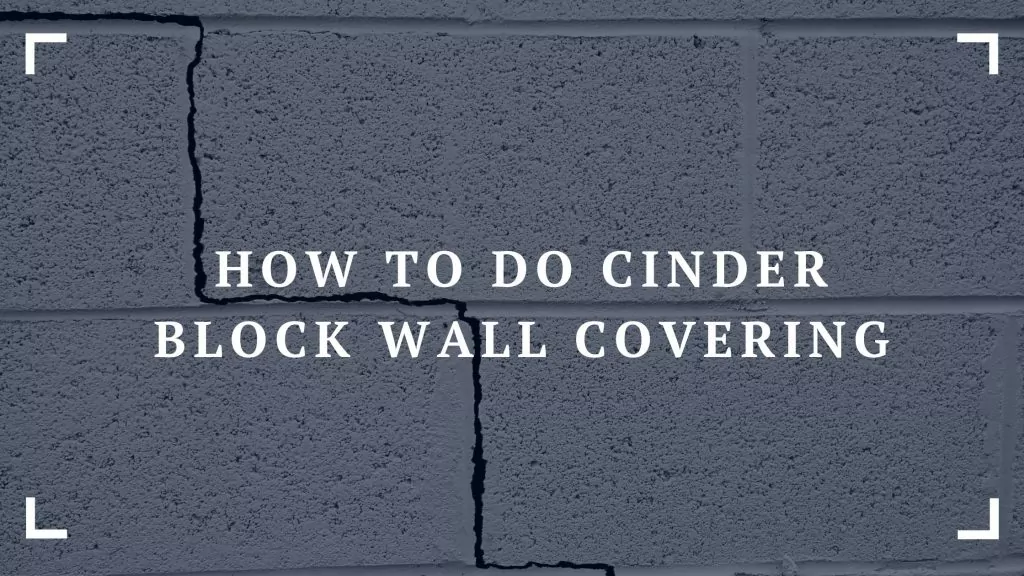
Fortunately, you can make your dull cinder block wall more appealing by using the ideas in this guide. Without further ado, let’s find out the best way for you to cover your cinder block wall with excellent decoration options!
Table of Contents
- How to Cover Cinder Block Walls
- Interior Cinder Block Wall Covering Ideas
- Exterior Cinder Block Wall Covering Ideas
- FAQ
- How can I incorporate landscaping ideas into my cinder block wall design?
- What are some unique cinder block ideas for outdoor seating and garden areas?
- Are there cost-effective cinder block ideas for a dorm room or small spaces
- Can I use cinderblocks for an industrial-inspired patio or yard design?
- How can I decorate a curved retaining wall made of cinder blocks?
- Conclusion
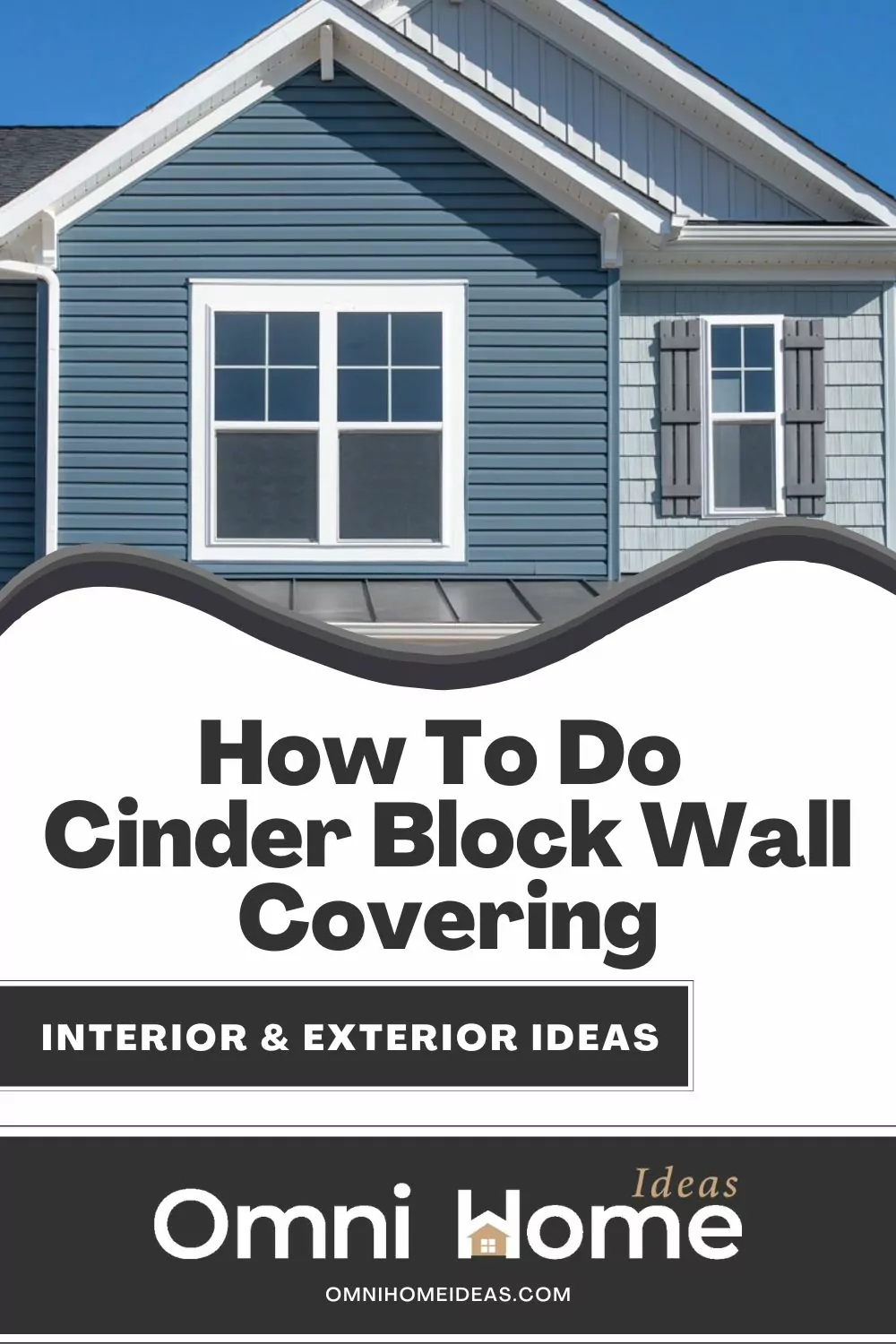
How to Cover Cinder Block Walls
Preparing your cinder block wall before decorating it with any material is essential for a clean and crisp finish. We bet you don’t want to sulk over the unfilled holes and cracks you observed after painting it.
Therefore, follow these steps to ready your cinder block wall for the further application of any type of idea. Keep in mind that some of these steps are skippable if the cinder block wall is on the exterior of your home.
However, if it is inside the building, like a basement cinder block wall, you must diligently apply all these basic steps before pursuing it.
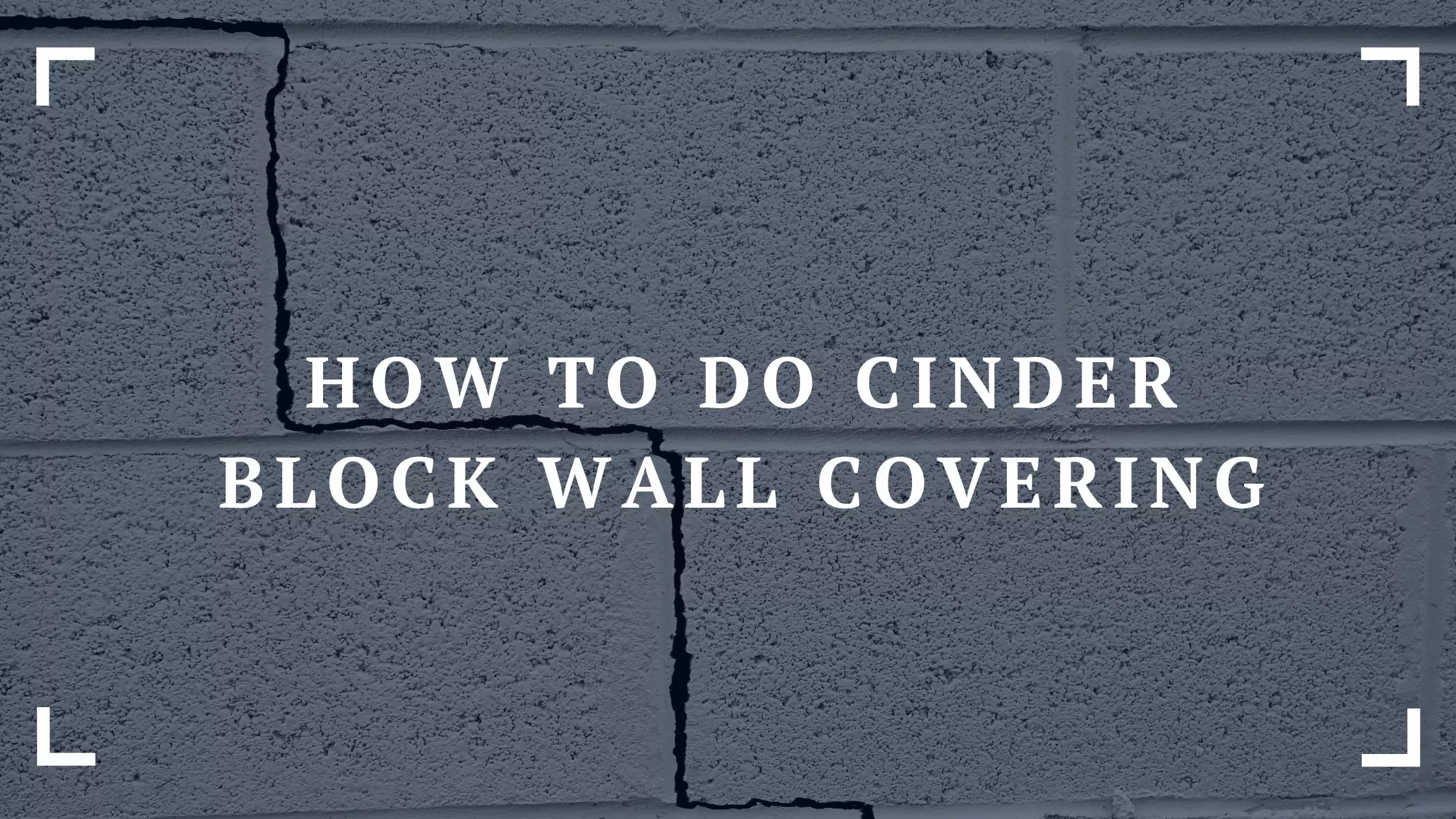
Basic Steps
Getting full awareness of your cinder block wall’s condition is vital to preparing it for the right decoration. Furthermore, if it is in your basement, you must consider several factors in the wall makeover project, like waterproofing, insulation, etc.
Once you decide on the wall condition and how you want it, you can leave it to professionals or go for a DIY project!
Start With Deep Cleaning
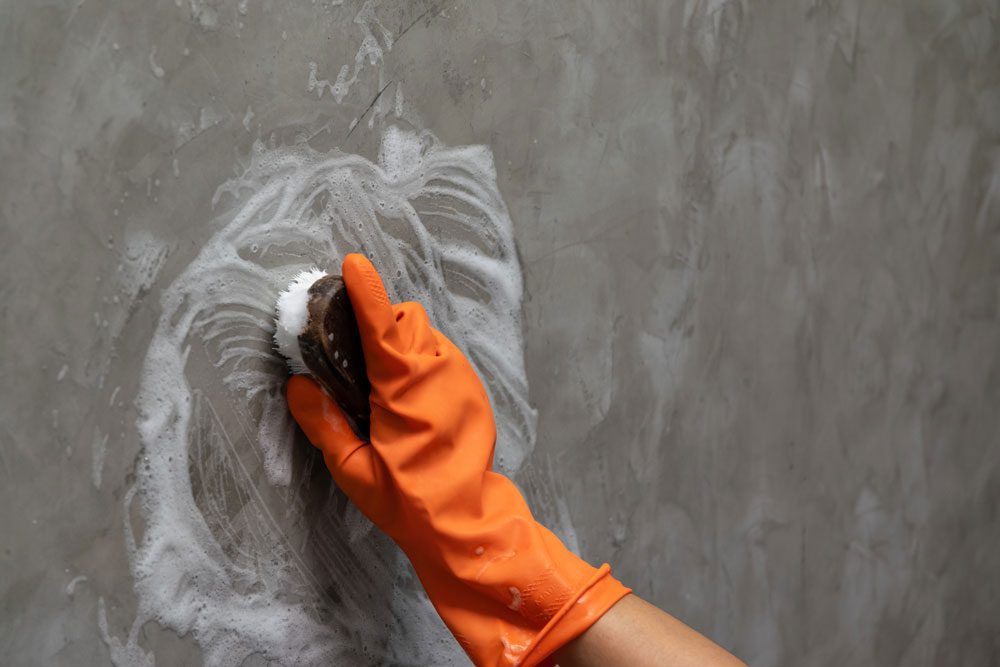
Your interior or exterior cinder block walls might have greasy spots and tons of surface dust. If you notice them both, start your project with some deep cleaning.
You will need warm water, mild dish soap, and a stiff brush. Mix dish soap with warm water, sprinkle over the wall, and clean and scrub!
Fill Cracks and Holes
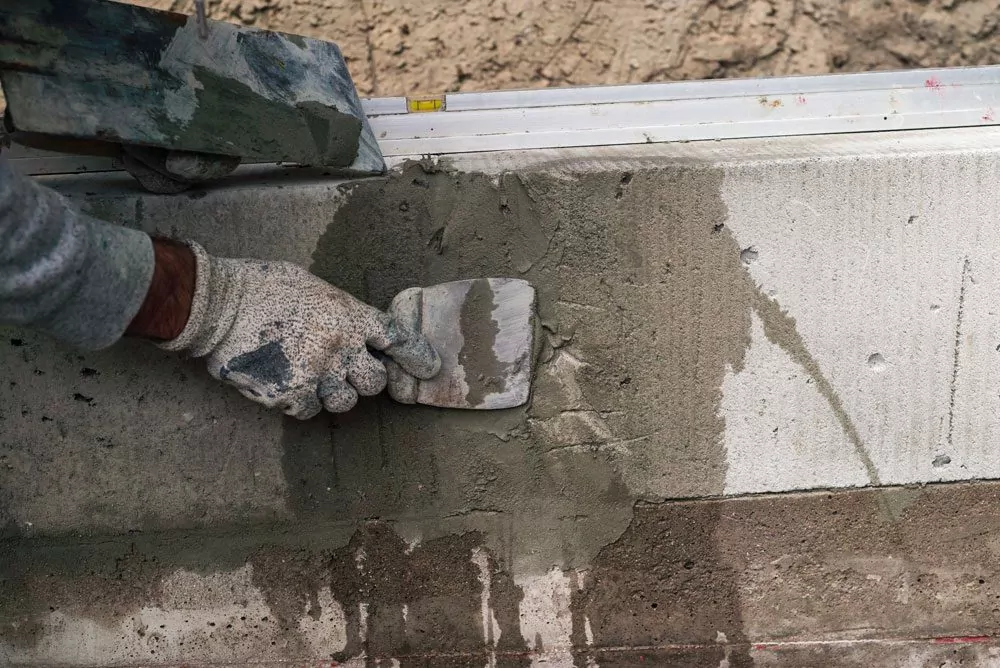
When cleaning, inspect the cinder block wall for holes and cracks. If you let them be, they will ruin your final results and make your wall prone to damage in the long run.
For this purpose, you can use hydraulic cement or a concrete patch compound. To patch cracks and holes, start by removing loose concrete bits from the holes or cracks.
After that, follow the manufacturer’s instructions to apply the concrete patch most finely. If you do not have a patching compound, you can choose from concrete, sand mixture, nails, and epoxy to repair holes and cracks in your cinder block wall.
Consider Waterproofing
The likelihood of your exterior walls being waterproofed is greater than the interior walls. Therefore, if you are working on the interior cinder block walls, especially in the basement, consider waterproofing them.
Also, older homes may not have any exterior waterproofing at all. Even if they have, groundwater flow may have caused the exterior waterproofing installation to wear off.
Significant moisture problems may amplify your need for efficient wall waterproofing. Moreover, if you waterproof your basement walls, you will not have to worry about damage from outside water.
Therefore, you must never skip this step if you want a fully-protected cinder wall for years to come. If it is DIY, you can search online for several waterproofing methods according to your basement’s or room’s conditions. Otherwise, consult an expert for the best and most effective tips.
Insulation
Insulation in your interior cinder walls, including basement walls, can promote thermal performance. Furthermore, it can help protect concrete against damage and freezing. This applies when you are living in a cold-weather environment.
However, insulating your below-average walls would be impractical if you are in a warm climate. Besides, if you are going for wall insulation, you need to consider the insulating costs, which are very high.
Still, you can carry out insulation if you are not on a shoestring and think it is best for your home per the environmental conditions. Overall, weighing the pros and cons is the way to keep potential issues at bay in the future.
Ready for Covering
Finally, you are in the creative part as you now get to choose the best material and designs to make your wall attractive. If you are a home styling enthusiast like us, we know how tempting it is to embellish a blank wall, and the dedication must be above and beyond if it is a cinder block wall.
However, remember that it is best to choose the materials for wall construction according to your room’s environment. You must choose something that goes with your taste and fulfills its purpose of protecting the cinder blocks.
It is ideal to hire a professional carpenter to give the most refined finish possible. However, excellent carpentry skills are a must if you want to DIY. Moreover, if you are making over your basement wall, you must know the local building codes and use rot and moisture-resistant building materials.
Interior Cinder Block Wall Covering Ideas
Bring your interior cinder block walls to life by choosing and applying the decorating ideas we have for you!
1. Paint

Experts have arguably different opinions when it comes to painting cinder block walls. Many do not recommend painting cinder blocks as paint can’t bear the test of time and may wear off. It is also true because the cinder block walls tend to bleed more moisture than concrete ones.
Still, if you want to do it, you have the suggestions of many other experts. Painting the cinder blocks is fine if you use suitable materials like primer and waterproof paint.
You can paint your walls any color you want, given that it goes perfectly with your furniture and decorations. For instance, you can cover the cinder blocks with white paint. Using a Plaster Tex and trowel in painting your wall white will give your wall a rugged, classic, and artistic style.
Another possibility is to let the cinder block’s outline be and not fill in the linings with patch compound. Then, if you paint such a wall with dark and rich colors like gray, it will look even more expensive and classic with nice furniture.
While choosing to paint your interior cinder block walls, there is no limit to your creativity. So, choose what goes well with your style and let the painter inside you do its job!
2. Wood Covering
Attaching furring strips or farm lumber to your walls is great, but you only need to use pressure-treated wood. Pressure-treated wood is highly durable as it has a liquid preservative on its surface that protects against rot and moisture damage.
Wood Panel
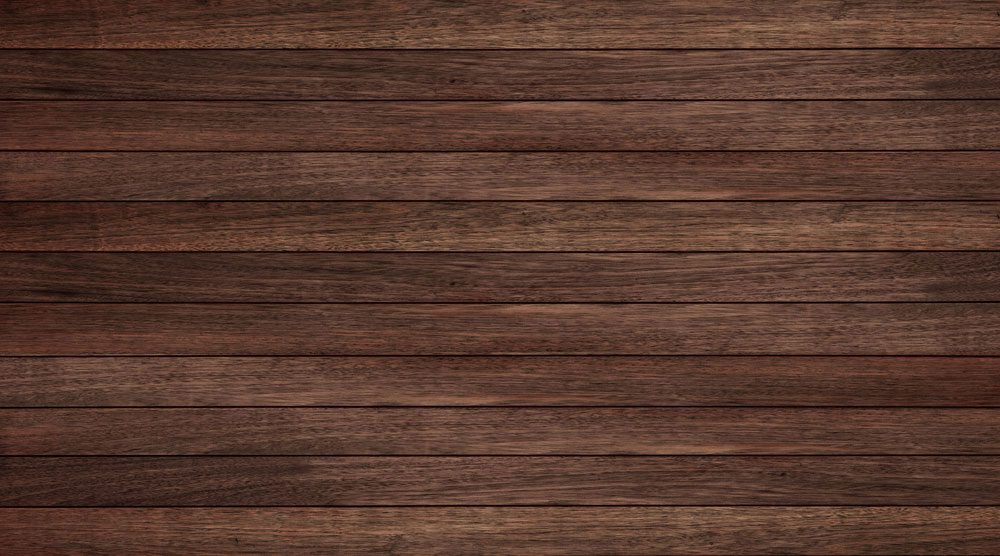
Corrosion-resistant furring channels or battens are necessary before installing the wood panels to cover your wall. Without these, the wood panels will not stay in place, making it hard to give an eye-catching look. Wood panels usually display a luxurious design with a modernistic and classical touch.
Shiplap
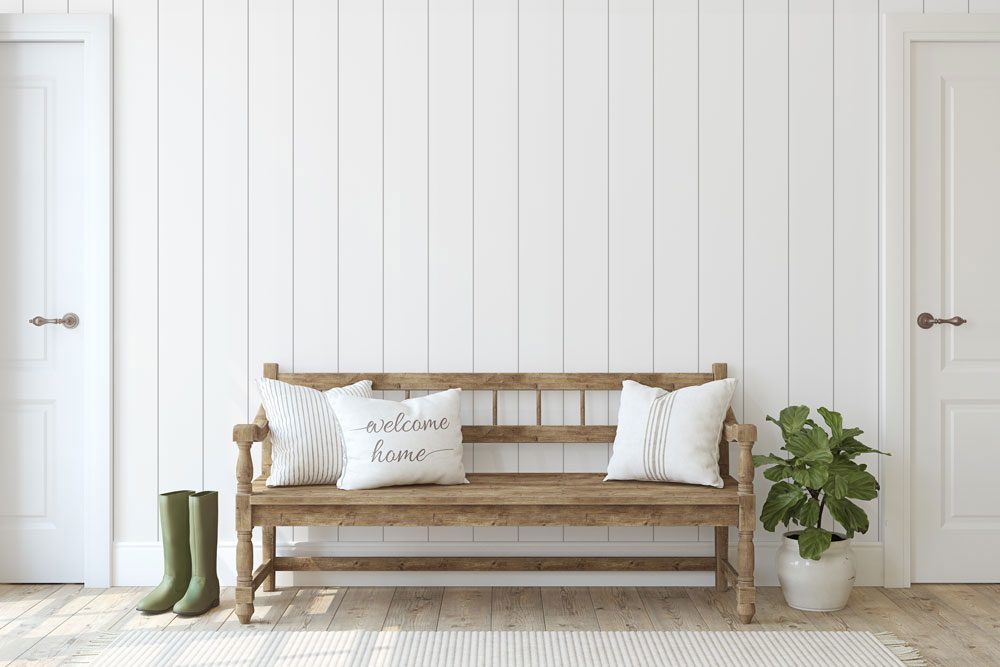
Shiplap has been in demand since 2015. Its highly sophisticated look, with a classical touch, portrays organic modernism. Thus, shiplap is ideal if you enjoy a raw and natural look with clean-lined white spaces.
Pallet Wood Covering
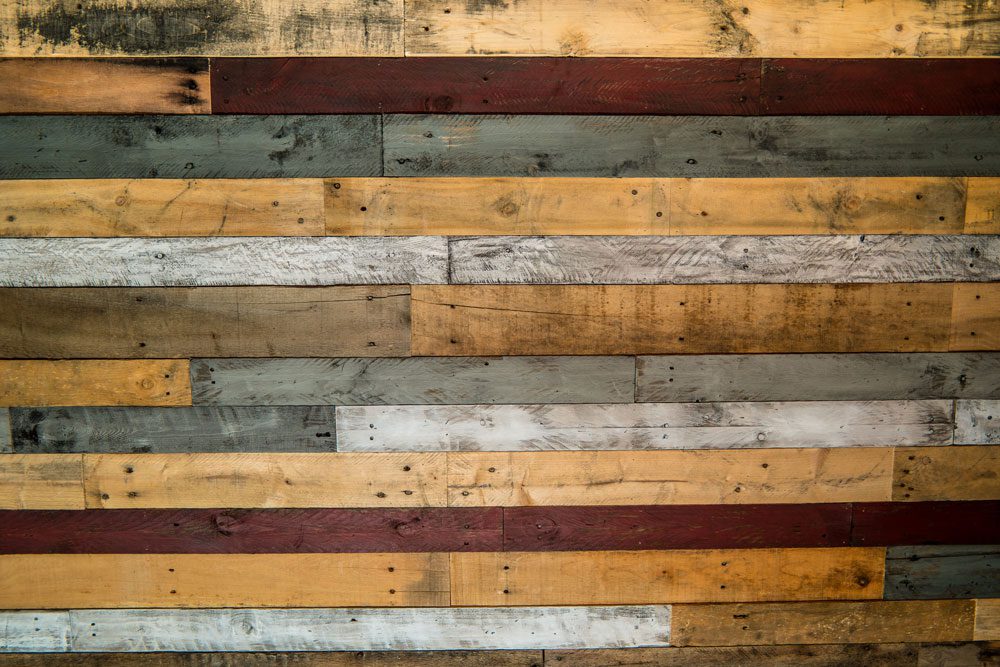
Pallet wood panels offer a rustic look and are best for a classic theme. You can create an appealing country design with pallet wood that never goes out of date. All in all, you will have cozy and stylish rooms and a basement with pallet wood covering.
More Panel Designs
Wall panels come in a variety of shapes and designs. The best part is that their installation is not labor-demanding since they usually come in big sheets and offer wide coverage.
The installation method is the same for wood panels; you need battens and croissant-resistant furring channels to keep the panel in place. Preferably, choose all the wall panels with waterproof properties.
3. Zen Wall Panels
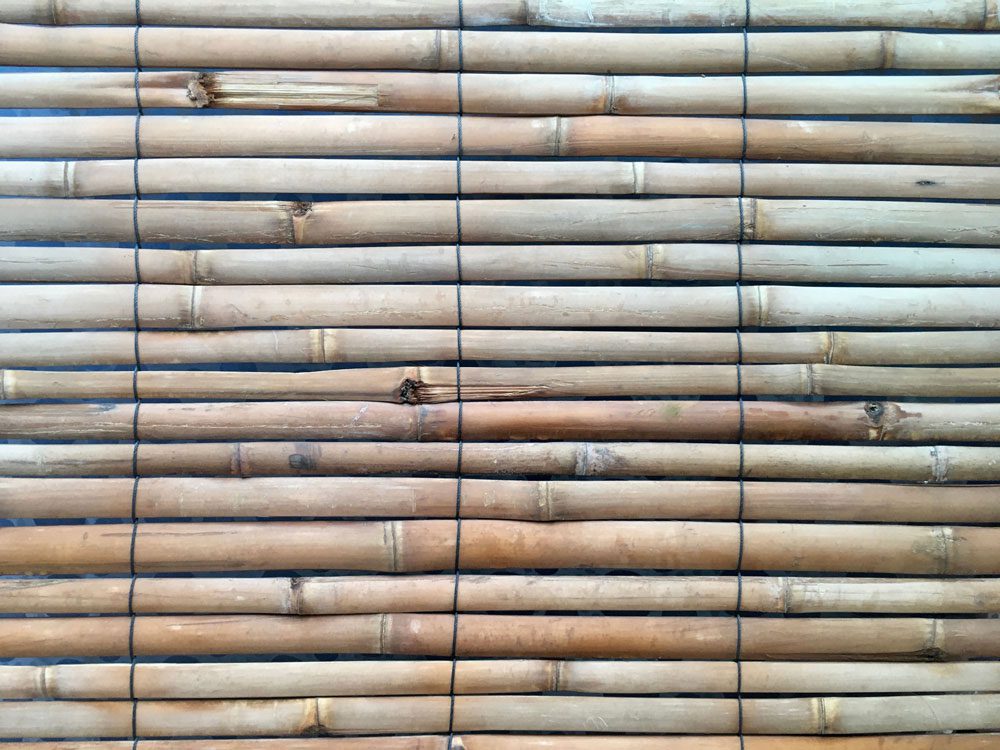
Zen wall panels are the best choice for basement cinder block wall coverage. They are inexpensive and durable, and their waterproof properties make them easy to clean and wash.
Besides, reflective foil barriers and fiberglass insulation add to their durability, enabling you to use them in basement drainage systems. These can be your best bet if you want a clean and crisp finish to your walls.
4. Brightwall Panels
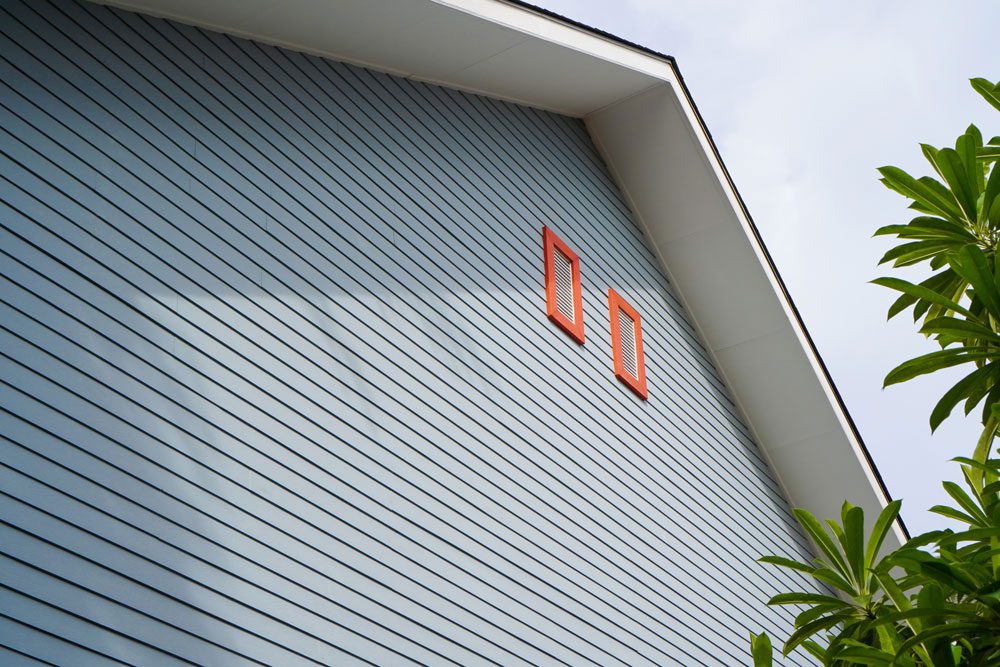
These panels are extremely beautiful in their raw form and do not require paint. Their maintenance-free and waterproof nature makes bright wall panels a convenient solution for many homeowners.
You can also use bright wall panels on your basement walls as they will serve as a vapor barrier. Besides, they also give your basement a bright and catchy look.
5. Drywall
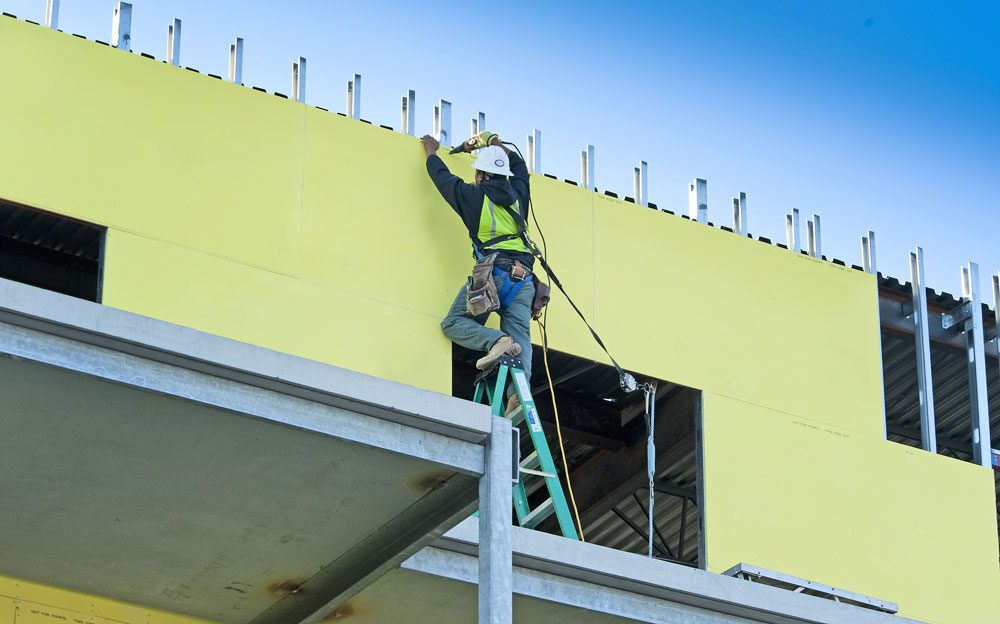
Homeowners prefer the most common material for basement walls, cinder block. If you want this coverage, you can choose from various options. What’s great is that you can choose a drywall option to address your problem. Moisture-resistant, soundproofing, and fire-rated are some of the types that can assist you in preventing certain issues.
6. Everlast Wall Panels
Everlast wall panels are stronger and sturdier, as their name shows. When used with stud construction, they are even more durable than drywall. This paneling system is ideal if you live in an area with high humidity. These panels do not rot nor allow the growth of mildew or mold.
Exterior Cinder Block Wall Covering Ideas
When the interior of your house matches your vibe and style, you can’t let the exterior be in its raw form. So, opt for the idea below if you want to cover your exterior cinder block walls and make them pleasing.
1. Concrete

The simplest method of refining your cinder block walls is to cover them with surface bonding cement. Concrete promotes insulation and makes the walls moisture-resistant. Its concrete finish is smooth; you can either leave it as it is or choose to paint it and make it a colored wall. For those looking to ensure the best results, consulting with a local concrete contractor can provide both the materials and expertise necessary for a flawless application.
2. Vinyl Siding
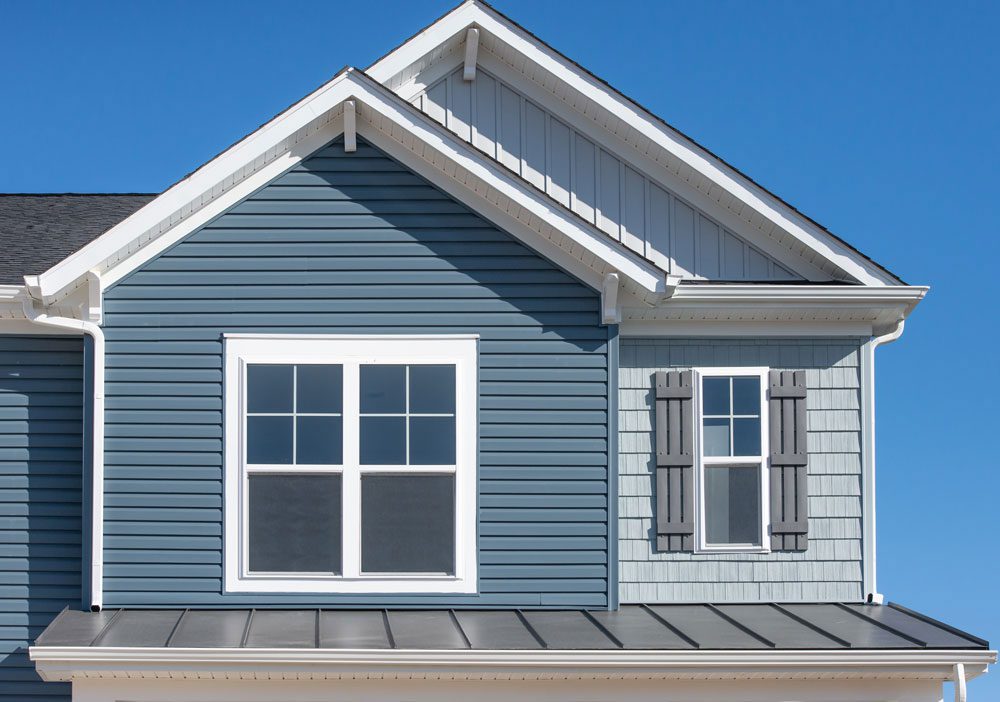
If you have already used vinyl siding in your home, combining the exterior cinder wall with siding will give your outbuilding a cohesive vibe. Vinyl sidings are available in many textures and colors, including stone and wood, mimicking looks. So, you have multiple choices to give your cinder block wall the look you want!
Discover various options for covering cinder block walls in your home and kitchen renovation project, including innovative techniques like vinyl siding installation. For detailed guidance, explore the informative resources available at https://northfaceconstruction.com/blog/vinyl-siding-installation/.
3. Stucco
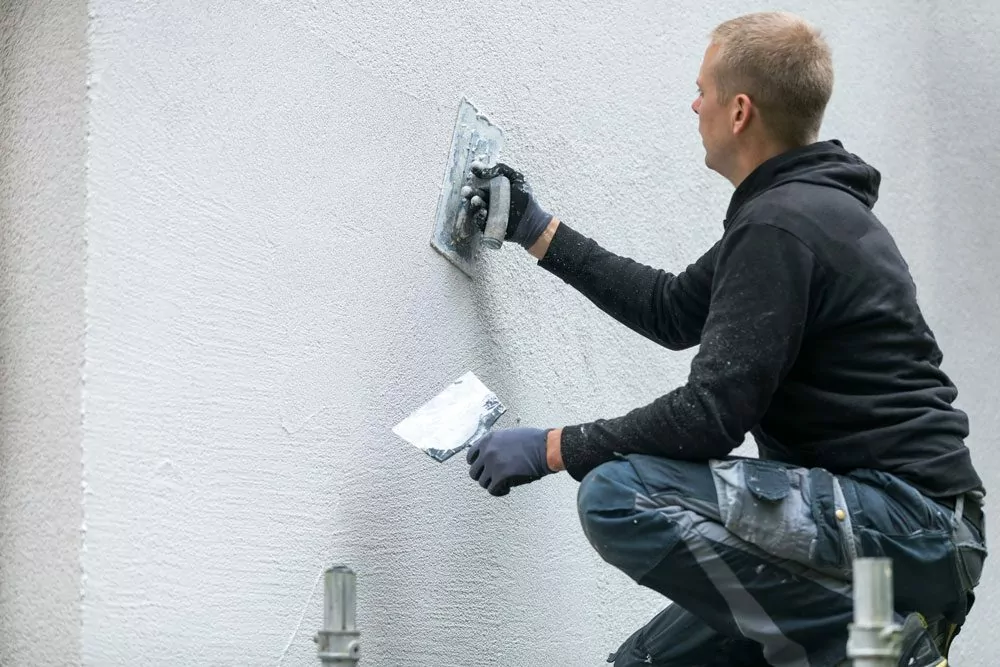
Stucco is the way to go if you are after an uncomplicated and classic finish with a decorative touch rather than concrete. Moreover, stucco transforms your home into a southwestern-style property. Since it is made of lime, silica, and a cement mixture, stucco provides the same properties as concrete.
4. Artificial Stones
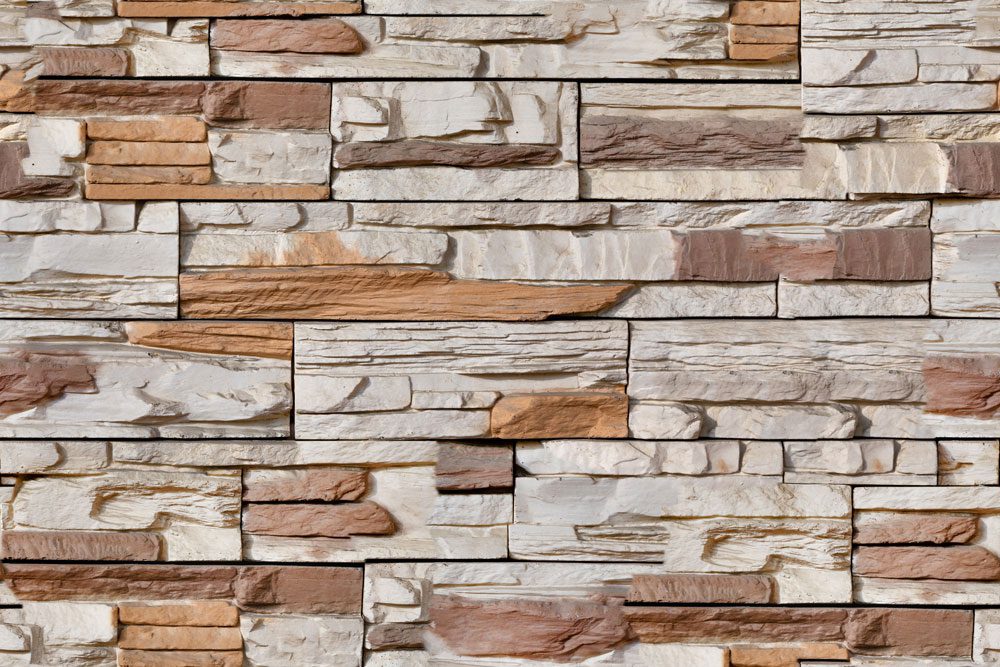
Any landscape can bring about liveliness with the timeless elegance of stone walls. If you want to give your drab cinder block walls a touch of luxury, stone walls should be your choice.
Stonewall veneers give off the vibe of real stone, and you get to choose from various styles. River rock, Fieldston, ledge stone, and slate are the common ones that pair best with cinder block walls.
5. Climbing Plants
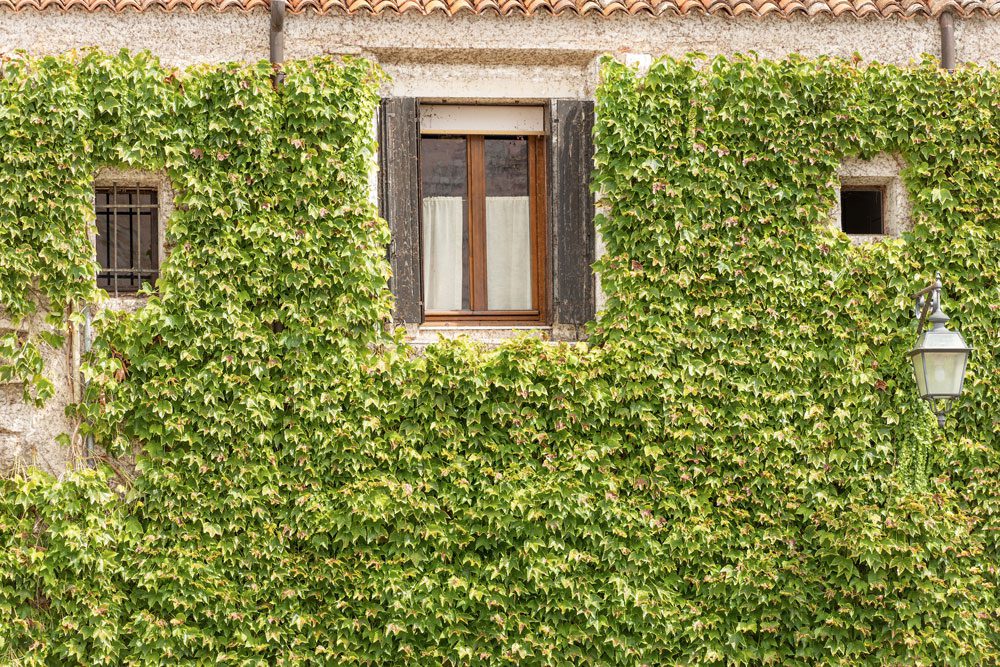
Use climbing plants if you love plants and want to give your building a greener and more natural look! Climbing plants are the easiest way to achieve a beautiful look. All you need to do is to attach the climbing plants to the lattice with the help of concrete screws that will help them spread.
FAQ
How can I incorporate landscaping ideas into my cinder block wall design?
You can transform your cinder block wall into a beautiful landscaping feature. Consider adding wall planters or creating a unique mosaic with retaining wall blocks. Use a combination of concrete blocks and garden elements to create a retaining wall that serves both functional and aesthetic purposes.
What are some unique cinder block ideas for outdoor seating and garden areas?
You can transform your cinder block wall into a beautiful landscaping feature. Consider adding wall planters or creating a unique mosaic with retaining wall blocks. Use a combination of concrete blocks and garden elements to create a retaining wall that serves both functional and aesthetic purposes.
Are there cost-effective cinder block ideas for a dorm room or small spaces
Cinder blocks are ideal for creating affordable and unique designs in small spaces like dorm rooms. Use them as shelves or as a base for a DIY bed frame. Painted cinderblocks can add a splash of color and serve as makeshift seating or a nightstand.
Can I use cinderblocks for an industrial-inspired patio or yard design?
Absolutely! For an industrial look, use cinderblocks in their raw form as part of your patio or yard. Combine them with architectural elements and industrial lighting to highlight the design. Cinderblock walls can also be used as retaining walls, adding both function and an industrial edge to your outdoor space.
How can I decorate a curved retaining wall made of cinder blocks?
Decorating a curved retaining wall can be done with various approaches. Planters and mosaic artwork can add color and texture. Integrating a brick wall pattern or using concrete retaining blocks of different shades can also create a visually appealing curved structure.
Conclusion
Cinder block wall covering can be complicated if you choose to do it yourself. Thus, you must ensure that you clean and scrub the walls well and apply the right solution to the issue.
If your walls need insulation, do not refrain from insulating them before decorating them the way you want. Besides, if you are using panels to cover the cinder blocks, it is vital to opt for waterproof materials only.
When done correctly, these ideas will beautify your interior and exterior walls and maximize their durability. However, if you are not confident, consider hiring experts for pleasing results!


